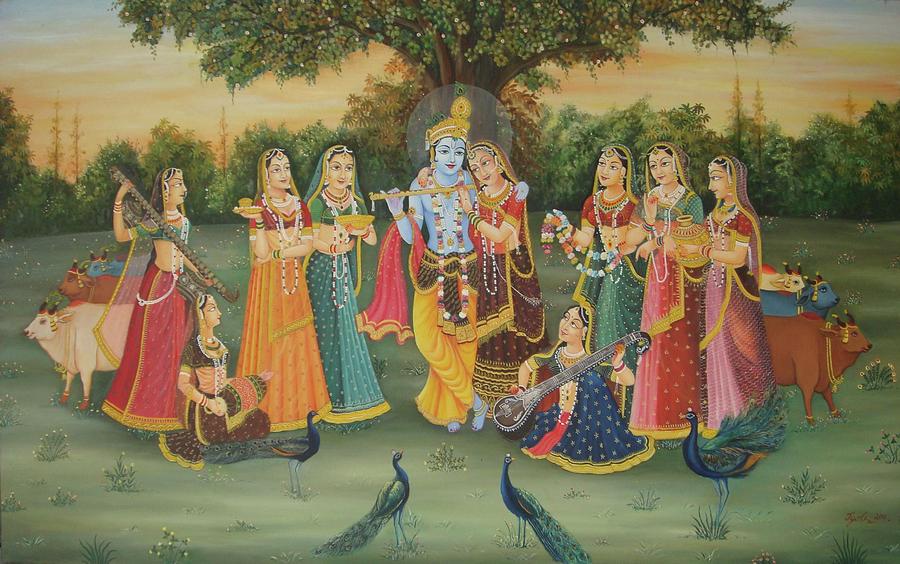ॐ श्री गुरुभ्यो नमः ॐ श्री शिवानन्दाय नमः ॐ श्री चिदानन्दाय नमःॐ श्री दुर्गायै नमः
Source of all Images in this Blog-post : Google Images : ‘Google Image Search’ will reveal the multiple sources of every single image shared here. For more details, kindly see ‘Disclaimer‘

A brief write-up on Rajput Paintings is posted right below the following images and introduction. Please don’t miss viewing the write-up.

Rajput painting, also called Rajasthani painting, evolved and flourished in the Royal courts of Rajputana in India. Each Rajputana kingdom evolved a distinct style of painting, but with certain common features.

Rajput paintings depict a number of themes like the events of epic Ramayana etc.

Miniatures in manuscripts or single sheets to be kept in albums were the preferred medium of Rajput painting. But many paintings were done on the walls of palaces, inner chambers of the forts, Havelis as well; particularly the Havelis, forts & palaces of Shekhawati kings.

Interested in buying some of the ethnic paintings of India? Here are some for your consideration. These are small selections from the timeless Rajpur paintings collected from multifarious sources :

The colours for these paintings were extracted from certain minerals, plant sources, conch shells, and were even derived by processing precious stones.

Gold and silver were also used. While there exists a plethora of themes in Rajput paintings, a common motif found throughout Rajput works is the purposeful manipulation of space.

Outside of a purely artistic standpoint, Rajput paintings were often politically charged and commented on social values of the time.

Mewar’s rulers wanted these painting to portray their ambitions and establish their legacy. Therefore, paintings were often indicative of a ruler’s legacy or the changes made by them for the betterment of society.

Both of these factors clearly distinguish Rajput paintings from Mughal paintings. While, from a chronological standpoint, both of these cultures clashed with one another, Rajput paintings only superficially adopted Mughal fashion and cultural standards.


In the last decades of the 16th Century, Rajput art schools began to develop distinctive unique styles of their own combining indigenous as well as foreign influences like Persian, Mughal, Chinese and European.


Rajasthani painting consists of four principal schools that have within them several artistic styles and substyles that can be traced back to the various princely states that patronised these artists.


